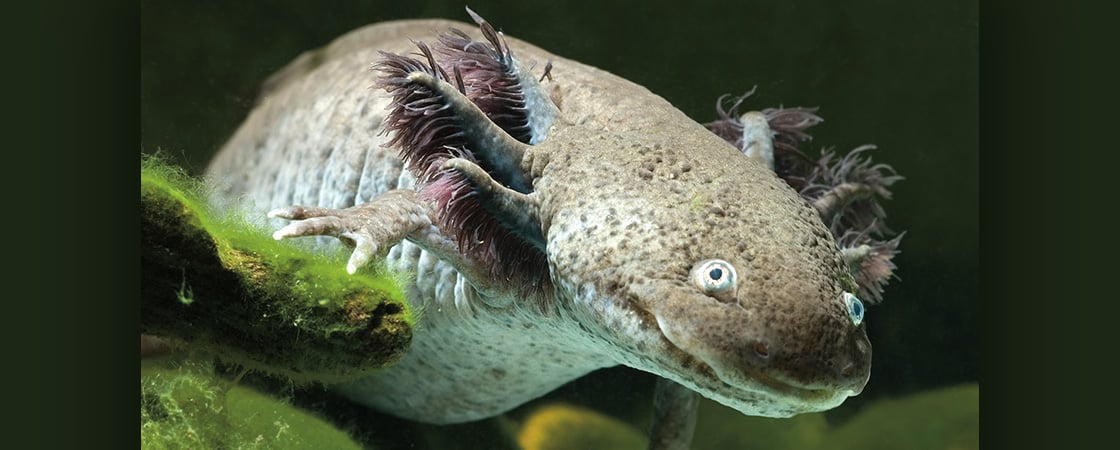Who doesn’t love an axolotl (AK-suh-lah-tuhl)? Their sweet faces and frilly gills have made these adorable amphibians popular pets and social media stars. And lately, they seem to be everywhere.
On TikTok, axolotl videos have earned billions of views. In Minecraft, boxy cartoon axolotls battle underwater enemies. At Build-A-Bear stores, little kids can dress plush axolotls in sparkling outfits. Last year, axolotls defeated zebras and sea otters to become a Girl Scout mascot.
But the axolotl is more than just the latest animal fad. For centuries, the creature has been a cherished part of Mexican culture. The ancient Aztecs—an indigenous people of central Mexico—believed the creatures were magical. It’s easy to understand why. Axolotls have the unique ability to regenerate, or regrow, many parts of their bodies, including their limbs, tails, spinal cords, and even parts of their hearts.
“Axolotls are an icon for Mexican people,” says Diana Laura Vázquez Mendoza, a scientist with the Universidad Nacional Autónoma de México (UNAM). “We can see our country’s history through the history of axolotls.”
Stroll through Mexico City today, and you’ll find axolotl murals emblazoned on buildings. At parades, giant axolotl floats wind through city streets, cheered on by crowds of adoring fans. When Mexico City was choosing an official emoji, the axolotl was the natural choice.
Who doesn’t love an axolotl (AK-suh-lah-tuhl)? These adorable amphibians have become popular pets and social media stars. And lately, they seem to be everywhere.
On TikTok, axolotl videos have earned billions of views. In Minecraft, cartoon axolotls battle underwater enemies. At Build-A-Bear stores, little kids can dress toy axolotls in fun outfits. Last year, axolotls became a Girl Scout mascot.
But the axolotl is more than just a fad. For centuries, the creature has been a cherished part of Mexican culture. The ancient Aztecs were an indigenous people of central Mexico. They believed that the creatures were magical. It’s easy to understand why. Axolotls can regenerate, or regrow, many parts of their bodies. They can regrow limbs, tails, spinal cords, and parts of their hearts.
“Axolotls are an icon for Mexican people,” says Diana Laura Vázquez Mendoza. She is a scientist with the Universidad Nacional Autónoma de México (UNAM). “We can see our country’s history through the history of axolotls.”
In Mexico City today, you’ll see axolotl murals on buildings. At parades, crowds cheer for axolotl floats. Mexico City chose the axolotl as its official emoji.


